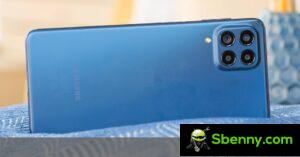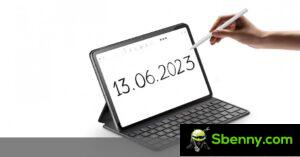Battery charging is one of the few remaining segments in the smartphone world where proprietary technologies can thrive. Most companies use chipsets from the same suppliers, they also buy the same screens and camera sensors. But the batteries and accompanying hardware are sometimes fully customized and have been a frenzied field of innovation in recent years.
Okay, USB Power Delivery exists, some might say it’s the best option due to its broad support. The same can be said for Qi on the wireless charging front. But right now the proprietary systems allow for higher speeds and are used on some amazing devices.

A simplified diagram of the speed with which charging systems do what they do
This week we wanted to observe how batteries and charging technology have evolved over the last decade and we will focus on Xiaomi. We will look at the averages for the most part, but we have also included the maximum values as they also tell an interesting story.


Best of Xiaomi: 120W Wired Fast Charging • 67W Wireless Charging
We often hear people say “give me a big battery, even if the phone is thick”. For better or for worse, neither Xiaomi nor other smartphone makers seem to agree with this sentiment. As you can see, the average thickness of Xiaomi phones has steadily decreased for a while, and then stabilized around 9mm. However, the average battery capacity has still increased over time thanks to improved technology.

Those growing batteries would take longer and longer to charge at the 10W USB baseline, so something had to change. Xiaomi’s first fast-charging phone was the Mi 3 (2013), which used Qualcomm’s Quick Charge 2.0 to make 18 W. In fact, Xiaomi has used quality control for many of its phones. For example, the Mi 9 Pro (2019) was equipped with QC 4+ and had 40W wired and 30W wireless charging.
But Quick Charge couldn’t keep up and Xiaomi phones with the highest charge levels switched to a proprietary solution. As mentioned at the beginning, it is one of the areas where companies can stand out with internal technology, such as the Surge P1 charging chip.

The battery capacity did not grow indefinitely. A few years ago Xiaomi had a Mi Max series, which had large displays and large batteries. The second model had a 6.44-inch display and a 5,300mAh battery. The third went up to 6.9 “and 5,500mAh. But those weren’t the company’s biggest batteries, no. Instead, phones like the cheap and not-too-big Poco M3 contain 6,000mAh batteries (the M3 measures 162 , 3×77,3×9,6 mm and weighs 198 g). 6,000 mAh is the maximum that Xiaomi has ever achieved.
Some interesting things we noticed while digging through the data. The 2018 Mi Mix 2S was the first Xiaomi to support wireless charging, it was rated at 7.5W. The company also released its first official Qi charger with the phone. The Mi Mix 3 from the same year went a bit faster with 10W support.
And from there it took off: 30W in 2019, then 50W, then 67W, so … nothing. At least not yet. But we are in the middle of the year and Xiaomi has yet to release a new phone that supports wireless charging.

What happened? The Mi 11 Ultra brought parity between wired and wireless charging, both rated at 67W. Of course, wired charging is more efficient, but not as much as you might think. Comparing wired and wireless, 0-100% charging times are 36 minutes and 39 minutes.
Even so, the company’s focus appears to have shifted to wired charging. Phones like the Xiaomi 11i HyperCharge 5G only exist to offer users the option of 120W super fast charging – a 0-100% full charge was completed in 16 minutes in our test. 22 minutes if you’ve disabled Boost mode to go slow on battery. Meanwhile, only a handful of models released in the past couple of years support wireless charging of 50W or higher.
How fast can the charging technology go? As for the USB-C cable, there’s a lot of head room. The latest USB Power Delivery specification offers a whopping 240W. Xiaomi itself was sporting a 200W charger a year ago. And it has an 80W wireless charger. We expect to see charge rates continue to rise for at least a few more years, especially the average charge rate.







Start a new Thread